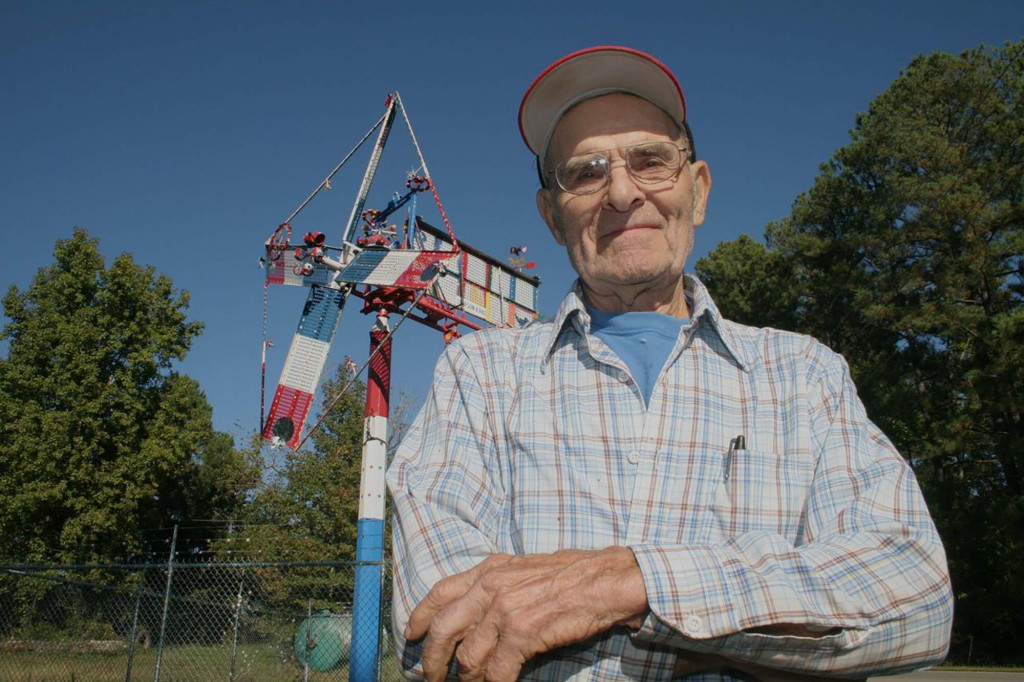The Outsider Art of Vollis Simpson
There’s nothing really all that unique about Lucama, North Carolina. With a population of much less than 2000, it’s like dozens of other small towns in eastern NC, communities that sit forgotten and overlooked in the middle of crop fields, whose residents are concerned mostly with farming.
Except for Vollis Simpson.
You see, Vollis really didn’t like farming all that much. His interest was more in mechanical things. Farm machinery. He wasn’t all that interested in school either. He quit after the eleventh grade. He joined the service and got to develop his mechanical genius on an island in the Pacific theater in WWII, where he robbed parts from a wrecked bomber and built a windmill to power a washing machine for his squad.
After the war, he went back to Lucama and worked mechanical things some more: he invented a house moving device and started a house moving company, he invented a crop sprayer, he ran a machine shop — and left the family farm work to his brothers.
But something happened after he retired in 1979. He had visions of windmills, fantastic tall assemblage creations of bits and pieces of junk metal, whose bizarre shapes soon peppered a plot on his land near a Lucama lake. Locals called it “Acid Park” and liked to drive by it at night to watch their headlights reflect off of the brightly painted sculptures.
But word got around. And people in the art world began to take sit up and take notice of those brightly colored moving whirligigs and invited Vollis to create a 55-foot-tall 45-foot-wide structure for the opening of a new museum in Baltimore. Other museums added his pieces to their collections. He was invited to exhibit at the 1996 Olympics.
Now there is a yearly festival and a park in nearby Wilson NC devoted to his art. And in 2013 the state recognized Simpson’s windmills as the official folk art of North Carolina.

